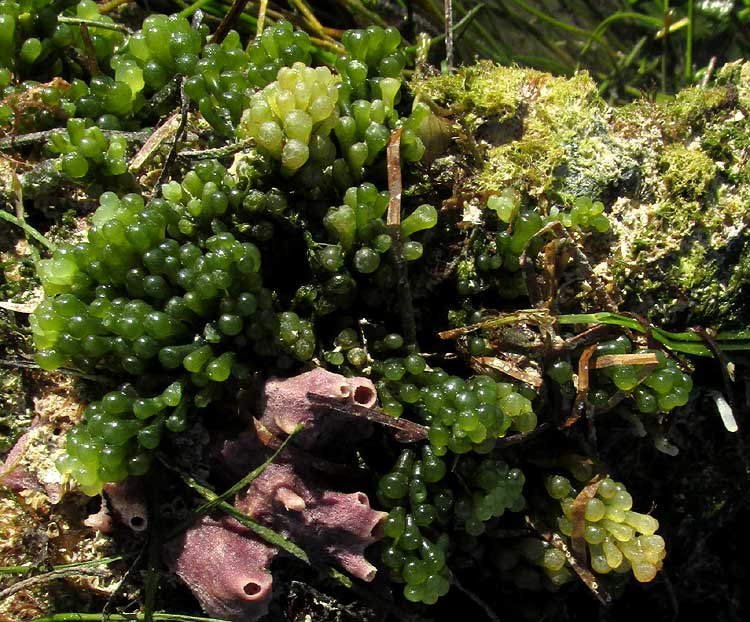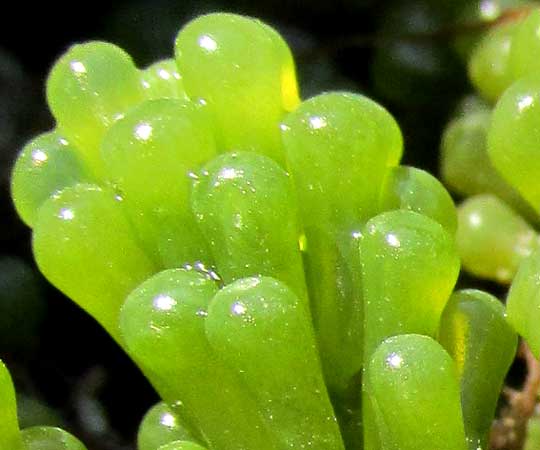Excerpts from Jim Conrad's
Naturalist Newsletter

from the March 1, 2015 Newsletter issued from Río Lagartos, on the Yucatan Peninsula's northern coast (~N21.60°, ~W88.16°), Yucatán state, MÉXICO
SEA GRAPES
At low tide -- the very lowest -- on hard surfaces where waves splash, often you find the green alga shown above, clumped around a pinkish sponge at the lower left. A close-up of some of the alga's succulent, shiny "branches" is shown below:

I thought this would be an easy alga to identify because the species is so common and distinctive. However, pinning down a name was a little tricky because this is one of the most variable-looking species I've ever met. Our alga's branches are club-shaped with rounded tips, but others of the same species found in different habitats and other parts of the world have branches varying from nearly spherical to golf-tee shaped with sunken crowns, to being long, slender and spaghetti-like.
Our alga is sometimes called Sea Grapes. It's CAULERPA RACEMOSA, an invasive species native to the Southern Hemisphere, thought to have originated in Australia, but now found worldwide in shallow coastal waters of both temperate and tropical seas. It began spreading through the Mediterranean in the 1990's and is now found throughout the Europe, Africa, the Pacific and Indian oceans, Caribbean Sea, and the Gulf of Mexico. The SeaweedIndustry.Com web page on Sea Grapes says that the alga's spread across the world's waters "... has had broad deleterious effects such as smothering native seagrass meadows, out-competing native algal species, transforming complex ecosystems into monospecific stands, and overgrowing corals, thereby seriously harming the health and function of reef systems."
Sea Grapes usually reproduces vegetatively by fragmentation, though sexual reproduction is possible by "holocarpy." Holocarpy is when all the alga body's cytoplasm is used up in the creation of enormous numbers of sexual gametes, which break through the body's husk, escape into the water, mate with gametes from other alga bodies, and form new alga plants.
Sea Grapes goes by many names and another English one is Green Caviar, hinting at its use as a raw salad vegetable providing a peppery flavor. It's also used in sauce making. Traditional medicine of the Philippines uses Sea Grapes to lower blood pressure and to treat rheumatism.